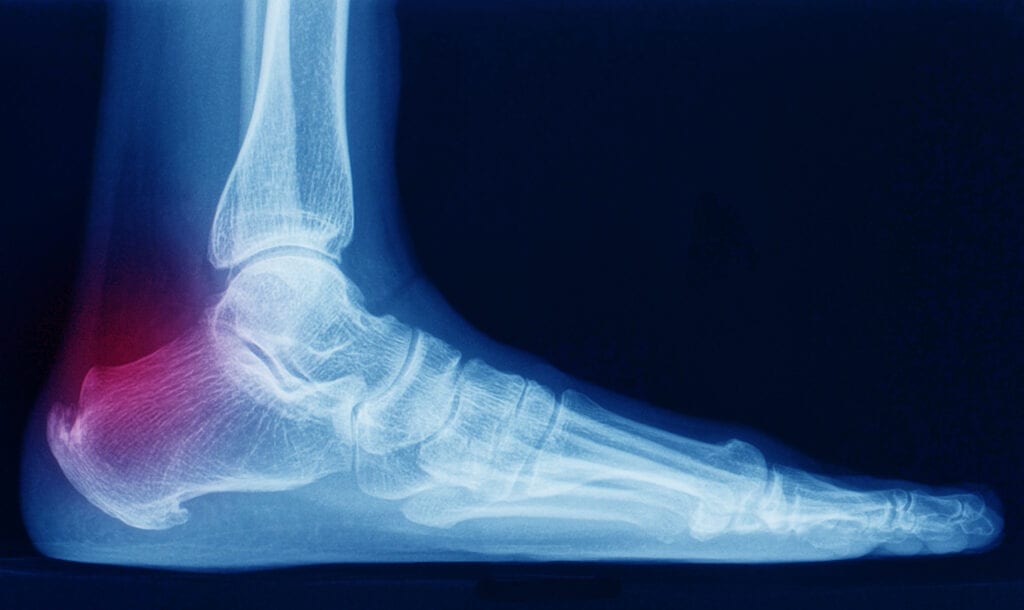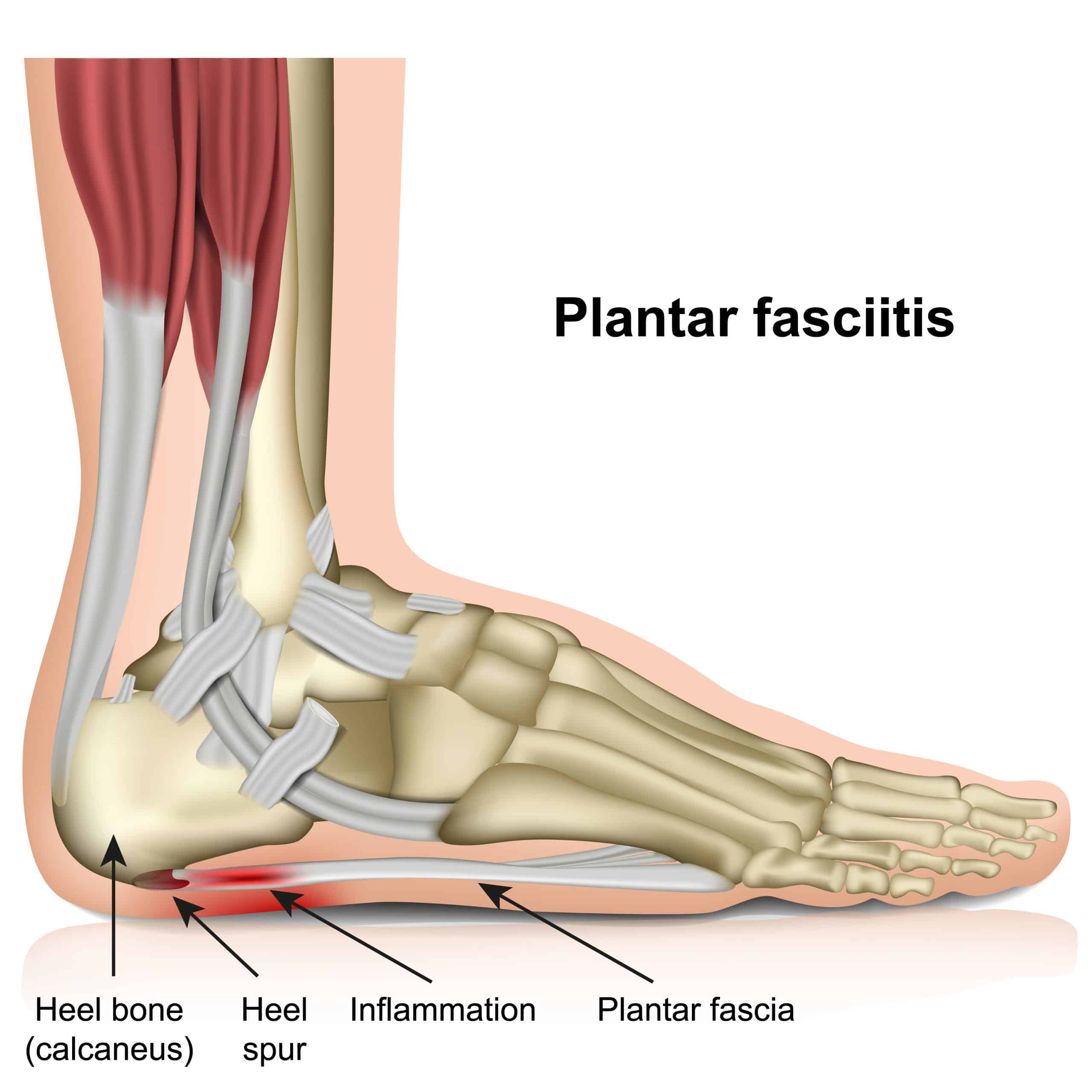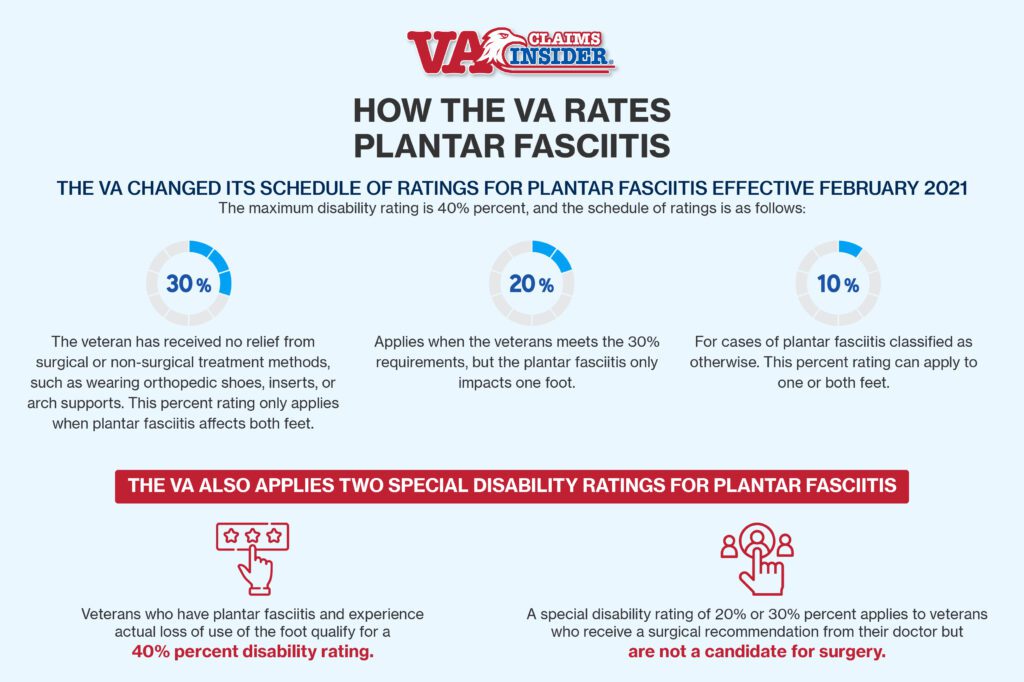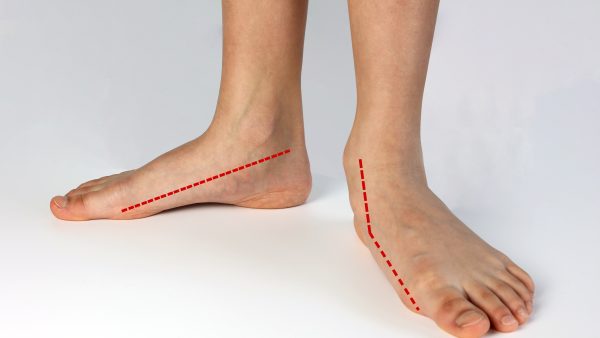Looking for Expert-Level VA Claim Answers?📱Call Us Now! 737-295-2226
In this guide, we will be exploring how to increase your VA Rating for Plantar Fasciitis.
Plantar fasciitis has its own diagnostic code (DC) 5269 with ratings that range from 10% to 30%, with a break at 20%.
The highest possible schedular VA disability rating for bilateral plantar fasciitis is now 30% (not 50%), which includes symptoms such as no relief from both non-surgical (orthopedic shoes or appliances) and surgical treatment.
However, if the veteran has actual loss of use of the foot, the rating is 40%.
A veteran’s final VA disability rating for plantar fasciitis depends upon the frequency, severity, and duration of symptoms. Meaning, the more severe your symptoms are, the higher the VA rating for plantar fasciitis.
There is also a bilateral factor, meaning veterans can get a higher VA rating for plantar fasciitis if they have the disability in both feet.
Okay, veterans – let’s take a minute to explore the law regarding the symptoms and impairment required to warrant a VA disability rating for plantar fasciitis.
Many veterans suffer from various foot conditions due to their military service, including severe heel pain, aka plantar fasciitis.
Table of Contents
Summary of Key Points
- The VA rates plantar fasciitis at 10%, 20%, or 30% under DC 5269, based on severity and whether the condition affects one or both feet.
- Bilateral plantar fasciitis with no relief from treatment may qualify for the maximum 30% schedular rating, or 40% if there’s actual loss of use.
- Plantar fasciitis is often secondary to service-connected issues like knee, hip, or back pain, and can be rated accordingly.
- A strong VA claim includes a diagnosis, service connection or nexus letter, and clear evidence of symptom impact, often evaluated in a C&P exam.

At VA Claims Insider, we recommend veterans get X-rays of both feet from the VA or a private doctor to confirm or exclude the presence of heel spurs, which can contribute to the pain associated with plantar fasciitis.
Also, both unilateral and bilateral plantar fasciitis are common secondary VA disability claims, especially plantar fasciitis secondary to lower extremity conditions such as knees, joints, hips, and back.
Plantar Fasciitis in Veterans
Plantar fasciitis is one of the most common causes of heel pain in veterans.
It involves inflammation of the thick band of tissue that runs across the bottom of your foot and connects your heel bone to your toes (called the “Plantar Fascia”).

Do you think you might have Plantar Fasciitis?
Here’s a quick litmus test: If it feels like a knife is being jammed into the bottom of your heel, especially during the first few steps out of bed in the morning or shortly after a workout, chances are you might have plantar fasciitis.
According to the Mayo Clinic, “Your plantar fascia is in the shape of a bowstring, supporting the arch of your foot and absorbing shock when you walk. If tension and stress on this bowstring become too great, small tears can occur in the fascia. Repeated stretching and tearing can irritate or inflame the fascia, causing severe heel pain.”
Common risk factors include:
- age
- long-distance running (such as military PT)
- poor arch and heel support (e.g., military combat boots)
- obesity,
- occupations that require a lot of standing (active duty military service, perhaps combat deployments)
VA Rating for Plantar Fasciitis: Common Symptoms in Veterans
Many veterans have or develop plantar fasciitis, and common signs and symptoms include:
- Heel pain (especially after standing, walking, or running)
- Painful motion
- Tenderness
- Swelling
You may get some relief by icing, taking pain medications, wearing a brace, heel inserts in shoes, night splints, and, in extreme cases, cortisone shots directly into the affected area.
Is Plantar Fasciitis a VA Disability?
Yes, plantar fasciitis is a VA disability and can be rated at 10%, 20%, or 30%, depending upon unilateral (one foot) versus bilateral (both feet) and the severity of your symptoms.
With actual loss of use of the foot, a 40% rating is awarded.
If a veteran has been recommended for surgical intervention but is not a surgical candidate, evaluate under the 20% or 30% criteria, whichever is applicable
Effective February 7, 2021, plantar fasciitis is rated under CFR 38, part 4, VA schedule of ratings, diagnostic code 5269, plantar fasciitis.
An important requirement for VA disability rating purposes is whether your foot condition is congenital or acquired.
“Congenital” means a disease or physical abnormality present since birth, whereas “Acquired” means a disease or physical abnormality that developed after birth.
Congenital plantar fasciitis is NOT compensable or pensionable unless you claim “aggravation of a pre-service condition.”
For example, perhaps you entered the military with flat feet but never had plantar fasciitis.
If your military service aggravated your flat feet (made it worse), leading to plantar fasciitis (severe heel pain), you can still be rated and compensated under the law.
According to CFR 38, Part 3, §3.306 Aggravation of Preservice Disability, “A preexisting injury or disease will be considered to have been aggravated by active military, naval, or air service, where there is an increase in disability during such service unless there is a specific finding that the increase in disability is due to the natural progress of the disease.”
VA Rating for Plantar Fasciitis Criteria from 0% to 30%
Under Diagnostic Code 5296, VA disability ratings for plantar fasciitis (unilateral and bilateral) are as follows:
- 30%: No relief from both non-surgical and surgical treatment, bilateral
- 20%: No relief from both non-surgical and surgical treatment, unilateral
- 10%: Otherwise, unilateral or bilateral
Note (1): With actual loss of use of the foot, rate 40%
Note (2): If a veteran has been recommended for surgical intervention but is not a surgical candidate, evaluate under the 20% or 30% criteria, whichever is applicable
Plantar Fasciitis VA Rating Chart

Secondary Service Connection for Plantar Fasciitis
Veterans who receive a diagnosis of plantar fasciitis after leaving the military might still be eligible if medical evidence shows heel pain is proximately due to or aggravated by another service-connected disability, such as knee strain, hip conditions, and/or back conditions.
Service connection on a secondary basis requires a “showing of causation.”
A showing of causation requires that the secondary disability be shown to be “proximately due to” or “proximately aggravated by” another service-connected disability.
By law, there are three evidentiary elements that must be satisfied for plantar fasciitis Secondary Conditions:
- A medical diagnosis of plantar fasciitis (Heel Pain) in VA medical records or private records (unless you already have a diagnosis in your service treatment records), AND
- Evidence of a service-connected primary disability (such as Knee Strain, Lumbar Strain or Back Pain, Hip Condition), AND
- A medical nexus, which offers proof the health condition for which the veteran requests VA disability benefits was caused (or worsened) by his or her military service.
The first part can be satisfied with any existing medical evidence in service treatment records, VA medical records, or any private medical records.
The second part can be satisfied with a veteran’s existing service-connected disability rated at 0 percent or higher.
The third part can be satisfied with a credible medical nexus letter from a qualified medical professional.
How to Prepare for Your C&P Exam for Plantar Fasciitis
A C&P exam for plantar fasciitis usually involves a physical examination and history of your foot condition and severity of symptoms over time.
The C&P examiner might order X-rays of your feet to help determine if there is objective medical evidence, such as calcified heel spurs.
You’ll want to explain to the C&P examiner HOW your severe heel pain is limiting or affecting your work, life, and social functioning.
For example, maybe your bilateral heel pain is so severe that you have difficulty walking and require help during periods of flare-ups.
Maybe you enjoy running and working out, but you’ve had to stop or significantly alter your routines because of your plantar fasciitis.
It’s also important to document whether you’ve tried heel cups, inserts, or night splints and if those devices help or not.
(FAQS) Frequently Asked Questions
Is plantar fasciitis considered a VA disability?
Yes. Plantar fasciitis is a recognized VA disability and is rated under Diagnostic Code 5269, with possible ratings of 10%, 20%, or 30%.
What is the highest VA rating for plantar fasciitis?
The highest schedular rating is 30% for bilateral plantar fasciitis with no relief from treatment. If there is actual loss of use of the foot, it can be rated at 40%.
Can plantar fasciitis be rated as a secondary condition?
Yes. It is commonly secondary to other service-connected conditions, such as knee strain, hip pain, or lumbar strain, with a medical nexus letter needed to prove the connection.
How does the VA evaluate plantar fasciitis during a C&P exam?
The examiner will assess pain severity, treatment history, and how symptoms impact your daily life. They may also order X-rays to confirm related issues like heel spurs.
Can I still get a VA rating if I had plantar fasciitis before service?
If your plantar fasciitis is congenital, it generally isn’t compensable. However, if it was aggravated by service (e.g., by poor military footwear or intense physical activity), you may still qualify under the VA’s aggravation rules.
Want Expert-Level Support for Your VA Disability Claim? WE GOT YOUR SIX!

- VA Claims Insider is the #1 most trusted name in VA disability claims.
- Work directly with a VA claims coach who can educate you to VA claim victory.
- 25,000+ disabled veterans have served in our membership programs since 2016.
- 30% average rating increase for veterans who complete our #1-rated Elite program.
- 4.7/5.0 average rating out of 6,000+ total reviews; over 5,000 5-star reviews.
About The Author

Brian Reese
Brian Reese is a world-renowned VA disability benefits expert and the #1 bestselling author of VA Claim Secrets and You Deserve It. Motivated by his own frustration with the VA claim process, Brian founded VA Claims Insider to help disabled veterans secure their VA disability compensation faster, regardless of their past struggles with the VA. Since 2013, he has positively impacted the lives of over 10 million military, veterans, and their families.
A former active-duty Air Force officer, Brian has extensive experience leading diverse teams in challenging international environments, including a combat tour in Afghanistan in 2011 supporting Operation ENDURING FREEDOM.
Brian is a Distinguished Graduate of Management from the United States Air Force Academy and earned his MBA from Oklahoma State University’s Spears School of Business, where he was a National Honor Scholar, ranking in the top 1% of his class.




